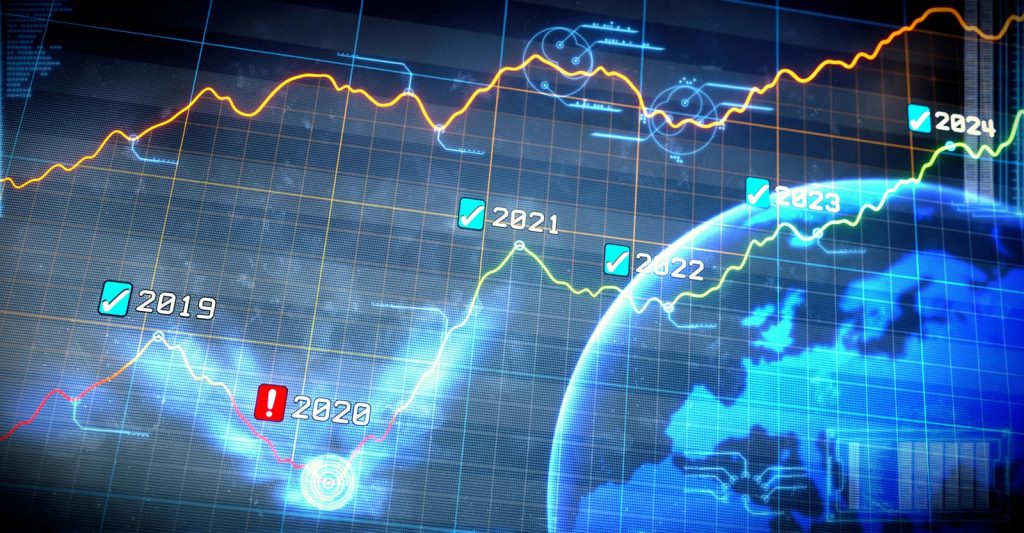In spite of summer jitters in financial markets, we expect governments will cautiously normalise monetary policy and global growth will remain robust. We believe there is further upside for equities, especially in cyclical sectors poised to gain from economic reopening
As central banks move gingerly towards normalising monetary policy, a delicate balancing act is under way. They need to tighten policy – but neither too soon, nor too quickly. Indeed, the flattening of the US yield curve in June signalled fear that the US Federal Reserve might tighten too fast, bringing an end to the economic cycle.
While economic growth may be peaking in the US, global growth should pick up in the second half of this year as lagging regions supercharge growth. Only China is slowing following a tightening of monetary policy earlier this year. Even so, it is unlikely that Chinese credit growth will be squeezed any further, although the tightening we have already seen will weigh on activity for several months to come.
A slow journey
By mid-summer 2022, GDP growth for the major economies should have normalised at around 5%, which is still high. Consumption will remain strong as households begin to spend the savings accumulated during lockdowns, and activity will shift from goods to services. US households alone have built up $2.6 trillion of excess savings since March 2020.1
To meet rising demand, companies will have to boost capital expenditure. This will come at the same time as the US continues to boost fiscal spending2 while the European Union embarks on its Recovery Fund and Next Generation Plan.3 Growth in the US might slow from its present heady level but it is hard to see a global recession occurring in the foreseeable future.
Another fear is that the Covid-19 Delta variant will delay reopening of economies. But as vaccination rates rise, the feedthrough to hospitalisations and deaths has not occurred. The UK was the test case for other countries, and saw the number of new cases and deaths diverge. What’s more, 10 billion vaccine doses will be produced by the end of 2021,4 enough to vaccinate most of the world’s population by early 2022, limiting the danger of further lockdowns.
Inflation has been boosted by used cars, hotels and airfares. But underlying inflation is not a problem right now: the US personal consumption expenditures index is running at only 1.8% year-on-year, the 10-year Treasury inflation breakeven indicator is at 2.3%, while the Atlanta Fed Wage tracker is actually falling, which means that price hikes are not feeding into higher wages.5

Even so, smaller central banks in Norway, Canada and the UK are already cutting bond purchases6 and talking about tightening interest rates. The Fed is the most dovish of all central banks, waiting until the labour market reaches maximum employment before increasing rates.
Yet tighter monetary policy globally does not necessarily mean tight economic conditions, as fiscal policy will remain loose. The International Monetary Fund expects advanced economies to run cyclically-adjusted budget deficits of 2.6% between next year and 2026, compared with 1.1% between 2014 and the pandemic.7
The returning reflation trade
So what does a strengthening in global growth during the rest of 2021 mean for financial markets? Surging consumer spending and the increasing gap between strong earnings and stalling price relatives means further upside for equities, especially for cyclical sectors.
Year to date, earnings have been revised upwards by 11% across the major regions, the strongest showing on record.8 Record earnings have been accompanied by price/ earnings ratio deratings, despite strong equity markets. Earnings forecasts for cyclicals have risen, those for defensives have fallen. This has created an opportunity to buy cyclical stocks.
European stocks have a chance to outperform, partly because they tend to outperform when bond yields rise, as the market is shorter in duration with fewer growth stocks. Corporate earnings growth in Europe could beat our current 35% forecast, returning to pre-Covid levels by the end of 2021.
This would be a very sharp recovery compared to previous recessions. After the global financial crisis it took 11 years for European earnings to regain 2007 levels.9 When Covid-19 broke out, European earnings had only inched 2% above the 2007 level. Yet Goldman Sachs, for example, now projects European earnings will grow by 4% a year from 2023, which compares favourably to 0.1% a year from 2007 to 2019.
All this suggests that the summer’s growth fears – and the effects on markets – are overdone. We look at the market and think, savings rates remain high, balance sheets are strong, as are housing markets, and labour markets are improving. Further, corporate earnings are recovering, as is capital expenditure. Infrastructure spending plans are a big positive. Why should economies slow?
We expect growth will remain strong over the next 12 months, as monetary and fiscal policy slowly return to normal. Equities should continue to outperform bonds, even though they are not especially cheap.


